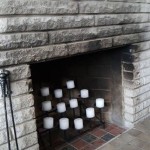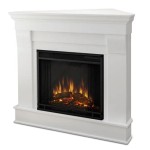Open Fireplace Decorating Ideas
An open fireplace serves as a focal point in a room, especially during colder months. Beyond its functional purpose of providing warmth, the fireplace offers a significant opportunity for stylistic expression. Decorating an open fireplace effectively necessitates a thoughtful approach that considers architectural style, personal preferences, and the overall aesthetic of the space it occupies. This article explores various decorating ideas to enhance the visual appeal of an open fireplace, transforming it from a purely utilitarian feature into a design centerpiece.
Embracing the Mantelpiece: A Canvas for Creativity
The mantelpiece, often the most prominent part of the fireplace structure, presents a prime area for decorative arrangements. Its horizontal surface invites a wide array of possibilities, allowing for the creation of visually striking displays that can be readily adapted to seasonal changes or personal tastes. Decorating the mantel involves balancing symmetry, height, texture, and color to achieve a harmonious and captivating composition.
A common approach is to utilize a central focal point, such as a large mirror or a piece of artwork. A mirror strategically placed above the mantel can amplify light within the room, creating a sense of spaciousness, while a carefully chosen painting or print can introduce color and personality. The dimensions of the mirror or artwork should be proportionate to the size of the mantelpiece and the surrounding wall space to maintain visual balance.
Flanking the central element with symmetrical arrangements of decorative objects can create a sense of formality and order. Matching candlesticks, vases, or figurines placed on either side of the central piece provide visual anchors and contribute to a sense of harmony. To prevent the display from appearing too static, varying the heights of the objects is often recommended. Using books stacked horizontally or vertically can add visual interest and create platforms for smaller items.
Alternatively, an asymmetrical arrangement can offer a more relaxed and eclectic aesthetic. This approach involves deliberately placing objects of varying sizes and textures in a way that feels balanced but not rigidly uniform. Overlapping items, incorporating different materials (such as wood, metal, and glass), and playing with negative space are all techniques that can contribute to a dynamic and visually engaging mantel display.
Consider the depth of the mantel when selecting decorative objects. Items that are too deep may protrude excessively, obstructing the flow of movement around the fireplace. Conversely, items that are too small may get lost amidst the surrounding architecture. Paying attention to scale and proportion is essential for creating a balanced and visually pleasing display.
Seasonality can also influence mantel decor. During the autumn months, incorporating natural elements such as pumpkins, gourds, and colorful leaves can evoke the spirit of the season. In winter, pinecones, evergreen branches, and metallic accents can create a festive atmosphere. Changing the mantel decor seasonally provides an opportunity to refresh the room and reflect the changing times of the year.
Hearth and Firebox Enhancement: Introducing Texture and Visual Interest
While the mantelpiece often receives the most attention, the hearth and firebox also offer opportunities for decorative enhancement. The hearth, the floor area in front of the fireplace, provides a space to introduce texture and visual interest, while the firebox, the interior of the fireplace, can be styled even when not in use.
The hearth can be enhanced with decorative elements such as fire screens, andirons, and tool sets. A fire screen serves the practical purpose of preventing sparks from escaping the fireplace while also adding a decorative touch. Fire screens are available in a wide range of styles, from traditional wrought iron designs to modern minimalist interpretations. The choice of fire screen should complement the overall style of the fireplace and the room.
Andirons, decorative supports for holding firewood, can also contribute to the visual appeal of the hearth. Andirons come in various shapes, sizes, and materials, ranging from simple iron bars to intricately sculpted figures. Selecting andirons that align with the fireplace's architectural style and the room's overall decor can enhance the aesthetic cohesion of the space.
A fireplace tool set, consisting of a poker, shovel, tongs, and brush, is a practical necessity for maintaining a fire. However, the tool set can also serve as a decorative element. Tool sets are available in a variety of finishes, including brass, iron, and stainless steel. Choosing a tool set that complements the fireplace and its surroundings can enhance the overall visual presentation of the hearth.
The interior of the firebox can be decorated even when the fireplace is not in use. During warmer months, consider filling the firebox with decorative logs, such as birch logs or bundles of kindling. Alternatively, a cluster of pillar candles or lanterns can be placed inside the firebox to create a warm and inviting glow. These elements can provide visual interest and prevent the firebox from appearing empty and neglected.
For a more dramatic effect, consider painting the interior of the firebox a contrasting color. A dark paint color, such as black or charcoal gray, can create a sense of depth and highlight the textures of the surrounding brick or stone. Alternatively, a metallic paint can add a touch of glamour and reflect light into the room.
Surrounding Space: Integrating the Fireplace into the Room's Design
The fireplace is not an isolated element; it is an integral part of the room's overall design. Decorating the surrounding space around the fireplace can enhance its visual impact and create a cohesive and inviting atmosphere. This involves considering furniture placement, wall decor, and other elements that contribute to the room's aesthetic.
Arranging furniture around the fireplace can emphasize its role as a focal point. A common strategy is to create a seating area that faces the fireplace, encouraging conversation and creating a sense of intimacy. Sofas, armchairs, and ottomans can be arranged to form a comfortable and inviting space around the hearth.
The placement of the furniture should consider the size of the room and the location of other architectural features, such as windows and doorways. Leaving adequate space for movement around the furniture is essential for creating a functional and comfortable living space. Avoid overcrowding the area around the fireplace, as this can detract from its visual impact.
Wall decor surrounding the fireplace can further enhance its aesthetic presence. Consider hanging artwork, mirrors, or decorative shelves on the walls adjacent to the fireplace. These elements can add visual interest and create a sense of balance and harmony within the room.
The choice of artwork should complement the style of the fireplace and the room's overall decor. Consider the size, color, and subject matter of the artwork when making your selection. A large piece of artwork can serve as a statement piece, while smaller pieces can be grouped together to create a gallery wall.
Mirrors can be used to amplify light and create a sense of spaciousness in the room. Positioning a mirror across from a window can reflect natural light into the room, making it feel brighter and more airy. Decorative shelves can be used to display books, plants, and other decorative objects, adding visual interest and personality to the space.
Lighting plays a crucial role in enhancing the ambiance of the room. Consider adding sconces or lamps on either side of the fireplace to create a warm and inviting glow. Dimmable lighting allows you to adjust the brightness of the room to suit your mood and activities.
Area rugs can define the seating area around the fireplace and add warmth and texture to the floor. Choose a rug that complements the color scheme and style of the room. A rug with a bold pattern can add visual interest, while a neutral rug can create a more subtle and understated look.
Incorporating plants into the decor around the fireplace can bring a touch of nature indoors and add a sense of freshness to the room. Potted plants can be placed on the mantelpiece, on shelves, or on the floor near the fireplace. Choose plants that are appropriate for the light conditions in the room and that complement the overall style of the decor.

Fireplace Decorating Ideas

10 Empty Fireplace Ideas For Your Home Halman Thompson

7 Unique Ways To Remodel Decorate Your Unused Fireplace

45 Fireplace Decor Ideas To Add Warmth And Style Your Space

45 Fireplace Decor Ideas To Add Warmth And Style Your Space

100 Fireplace Ideas Room Living

12 Decorating Ideas For Nonworking Fireplace Design Living Room Decor

My Simple And Cozy Fall Mantel Fireplace Decor Worthing Court Diy Home Made Easy

No Fire Problem 12 Ideas For An Empty Fireplace Gatheraus

50 Cozy Fireplace Design Ideas








